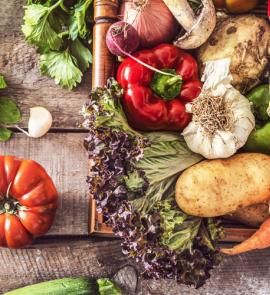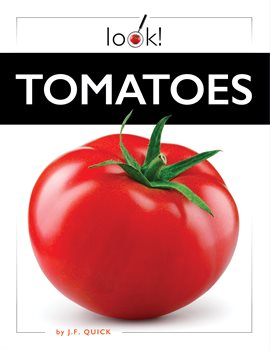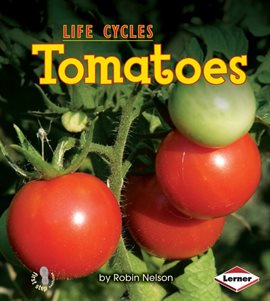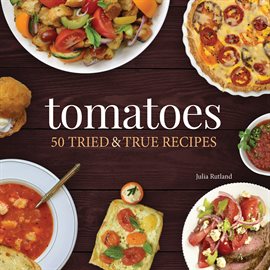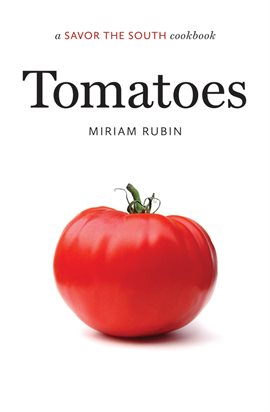Welcome to the Seed Library
Seed Library Locations
- Bixby Library | 20 E. Breckenridge Ave. 74008
- Central Library | 400 Civic Center 74103
- Collinsville | 1223 Main 74021
- Glenpool Library | 730 E. 141st St. 74033
- Hardesty Regional Library | 8316 E. 93rd 74133
- Martin Regional Library | 2601 S. Garnett Road 74129
- Nathan Hale Library | 6038 E. 23rd St. 74114
- Suburban Acres Library | 4606 N. Garrison 74126
- Zarrow Regional Library | 2224 W. 51st St. 74107
Getting Started
- Browse the Seed offerings in person at Central, Bixby, Collinsville, Glenpool, Hardesty, Martin, Nathan Hale, Zarrow or Suburban Acres.
- Pick fifteen things you'd like to grow and save seed from.
- Take them home and grow them.
- Let a few of the best plants set seeds, ripen fully and dry.
- Collect, dry, and label the seeds. Keep some for yourself and give some back to the library.
What Seeds Can I Get?
Tuesday, Oct. 7, 2025: Seeds of Rose milkweed, a native perennial that supports monarch butterfly larva, will be arriving at all seed locations this week. Milkweed needs cold moist stratification to germinate, so fall is a perfect time to sow outdoors. There will also be a few cool weather greens such as kale and arugula and some fun varieties of basil. If you start basil in a pot now, you can bring it in to a sunny windowsill and enjoy fresh basil all winter.
All of our seeds are open-pollinated and most are heirloom. We strive to foster locally adapted varieties and by saving seeds you make them even more locally adapted. Seed saving does take a little bit of know how but we try to make it simple for you. Seeds are ranked by ease of seed-saving and we have lots of tips, links, and books for you to learn more.
Seed availability is seasonal and depends on many factors. Varieties that have been available in the past may not be now. We try to offer seeds around their appropriate planting times. If there is something you'd like we don't have, let us know!
FAQ
Is seed-saving complicated? Not necessarily. The plants on the advanced list require some tricks and planning but the easy plants are perfect for beginners.
How do I tell what's open-pollinated and what's heirloom? Most commercial packets will say if they're open-pollinated or hybrid. If you're not sure, just look up the variety.
What if my plants don't do well? Not everything will flourish; if you get seeds that don't do well, don't bother returning them. On the other hand, if you have seeds from other plants that are really terrific, we would love to have some!
Does the Seed Library want my left-over packets? Yes, please! If you have open-pollinated commercial seeds to share, we'd love some.
Can I share plants, cuttings and bulbs too? We have events where we can swap big things like bulbs and plants, but no way to store them in the library.
Where can I get these seeds? At Central, Bixby, Collinsville, Glenpool, Hardesty, Martin, Nathan Hale, Zarrow or Suburban Acres library.
My Seed Library packet I got was way too big! What can I do with the leftover seeds? You're welcome to return them to the library, save them for next year, or share them with others. If packets are consistently wrong-sized, let us know!
It says I can get fifteen packets per season--what's your idea of a season? Just use your best judgement; this is Oklahoma after all!
Can I tell if they're organic? Can I be sure cross-pollinating plants like squashes and corn will come true? Many home seed savers use organic methods but the certification process is expensive and arduous. We don't oversee seed savers' methods, so you just have to put some trust in your neighbors. We do ask when you donate seeds from cross-pollinating plants you explain what isolation techniques you used.
Disclaimer
Most of our seeds are saved at home by amateurs. The TCCL Seed Library cannot guarantee their purity or germination rates. Seed saving (and gardening) carries an element of chance.
Not all donated seed is suitable for the seed library. We will make every effort to find good homes for donated seeds we cannot use.
Seed Saving Difficulty Levels
TCCL Seed Library divides seeds into three levels of seed saving diffciulty: Easy, Medium, and Advanced.
Easy seeds are self-pollinating and require no special isolation techniques. That is, they pollinate themselves with minimal crossing from wind or insects. Easy seeds are perfect for beginning seed savers.
Medium seeds may require some isolation techniques or be biennial. Medium seeds are fun for intermediate seed savers.
Advanced seeds require careful isolation through time, distance, and mechanical means. Flowers may need to be kept closed and hand-pollinated, or the plants may require isolation distances much larger than the average home garden.
Easy to Save
These plants generally self-pollinate, so you don't have to worry about out-crossing, and make seeds in one season. Just let them ripen fully and dry completely, label and store.
- Beans
- Peas
- Lettuce
- Eggplant
- Tomato
*Tomato and pepper seeds have a thin coating that inhibits germination. Fermenting that coating off will make the seeds more successful.
Medium Difficulty
These plants may self-pollinate or cross-pollinate and should be separated from other varieties by distance. Some are Biennial and take two years to produce seeds.
- Arugula
- Basil
- Cilantro
- Chives
- Nasturtium
- Pepper
Advanced
These plants are insect or wind-pollinated and cross with other varieties, so to get true seed separate varieties by time, distance, or physical barriers like paper bags.
- Broccoli
- Cabbage
- Corn
- Carrot
- Kale
- Melons
- Okra
- Radish
- Squashes
- Swiss Chard
Seed Saving Basics
- Grow your garden.
- Choose the best plants—strongest, tastiest, prettiest or most productive—and let them go to seed and ripen fully.
- Wet-process seeds from wet fruits, like tomatoes, by soaking the seedy pulp 2-3 days in a jar of water, then rinsing.
- Dry all seeds completely.
- Store in a container and label.
- Fill out the return form on the first page of this guide..
- Return to the library for others and choose your next batch of seeds.
Here's a recording of a virtual Seed Saving Class from 3/21.
Isolation Techniques
To make sure the seeds you save are the same variety as their parents takes isolation techniques.
Distance: Many easy seeds need just a little distance, 25-50 feet, from other varieties of the same plant to make "true" seed.
Time: Some advanced seeds, especially wind pollinated plants, can be isolated just by saving seed pollinated earlier or later than other varieties.
Barriers: In the home garden, it may be easier to hand pollinate a squash flower and close it to other pollinators than to find 500 feet of isolation.
The library has several good books explaining seed saving.
The Seed Ambassadors have published an in-depth, free on-line booklet on seed-saving.
Seed Matters has published a handy on-line chart of isolation distances.
Garden Organic produced this Basic Botany for Seed Savers Guide.
Pollination and Isolation
Plants are divided into families and just a few major families make up our common gardens. If you know the family of a plant, you can make a good guess whether it self-pollinates or cross-pollinates, and so how much isolation you need to give it to get true seed. Here are some of the most commonly found, in order of ease for seed-savers:
Legumes: Beans and peas. Self-pollinating, require minimal isolation distance.
Compositae: Lettuce, sunflower, salisify, chickory, endive. Both self- and cross-pollinate, may require some isolation.
Solanaceae: Tomatoes and peppers. Usually self-pollinating, though peppers require more isolation distance.
Amarylliaceae: Leeks, onions and chives. Some cross-pollination, requires some isolation.
Umbelliferae: Carrots, dill, fennel, celery, parsnip, parsley. Cross-pollinate within species, isolation required.
Brassicas: Cabbage, broccoli, kale, cauliflower, mustards, radish. Cross-pollinate freely across species, require careful isolation techniques.
Chenopodiaceae: Beet, chard, spinach, lambsquarters, quinoa. Wind-pollinated and cross-pollinate very freely, require mechanical isolation (bagging).
Curcurbits: Squashes and melons. Cross-pollinate within species freely, across species occasionally, require careful isolation techniques.
Seed Processing
- Dry seed processing: seed that dries down on the plant and needs to be kept dry until it is sown. The steps involved are harvesting (usually cutting the seed stalk off of the plant), threshing (separating the seed from the stalk and chaff) and winnowing (removing the seed from the chaff using a breeze). Dry seed processing is used for grains, lettuce, brassicas, onions, beets, carrots, celery, cilantro, and chicories, among others.
- Wet seed processing: many garden fruits. This includes melons, peppers, eggplant, tomatillo, and squash seed.Wet seed processing involves removing the seed from the fruit, rinsing clean of debris, and then drying. A jar of water can be used to separate seed from debris -- seeds sink and debris usually floats. Drying the seed quickly and completely after wet processing is very important.
- Fermentation seed processing: Similar to wet seed processing, but the seeds and their juices (as in tomato and sometimes melons and cucumbers) are mixed with a little water and allowed to ferment for a day or few. The fermentation process breaks down germination inhibitors such as the gel-sack that surrounds tomato seeds. When a layer of mold has formed on top of the water and the seeds sink, the fermentation is complete. You simply need to add more water, swish it around, then decant the mold and pulp. You may need to repeat this process several times, as the good seeds sink to the bottom and the scum floats off the top. After all of the pulp, bad seeds, and mold is removed, drain the water from the seeds and set them out on a plate, screen, or paper towel to dry. Once the seeds are thoroughly dry, place them in a moisture-proof container, label and store them for the future.
Care and Keeping of Seeds
Seeds, kept under ideal conditions, can remain viable several years, even centuries. But without care, they start losing germination rates within a year. Handle seeds gently. Dropping and rough handling can reduce germination rates.
Seeds like to be:
- Dry
- Cool
- Dark
- Stable
Collect seeds in dry weather and dry further indoors, in a brown paper bag or on a cookie sheet, if necessary before storing.
Label seeds carefully.
Many people store seeds in sealed containers in the refrigerator, where it's dark and the temperature is constantly low.
More Resources for Gardeners
The Tulsa County OSU Extension Office offers a variety of educational services and fact sheets, as well as facilitating the Tulsa Master Gardeners Program. Master Gardeners operate a gardening helpline Monday-Friday, 9 a.m.-4 p.m. at 918-746-3701.
Tomatoes
Start tomato seeds 8-5 weeks before average last frost. In Tulsa, that's mid February to early March. These instructions will also serve for peppers and other warm weather, long season plants you want to start indoors.
Start indoors.
Sow in flats or small pots, or any other container that will drain water and hold up for two months. Use sterile seed-starting medium. Barely cover with soil and keep surface moist with a spray bottle. Keep flats or pots in a warm place or on heating mat; light is not required yet.
In a week to 10 days, seeds should germinate. Thin to one plant per cell, or to several inches room in a pot. Place under grow lights or in a very sunny south-facing window.
Keep the seedlings warm, well-lit, and moist. Transplant into larger pots after a week or two. Many gardeners swear by gently stroking the seedlings to encourage sturdy growth.
As spring warms up, gradually harden the seedlings off by placing them outdoors, first for a few hours at a time, then longer periods, on mild days.
Plant out only after all danger of frost.


